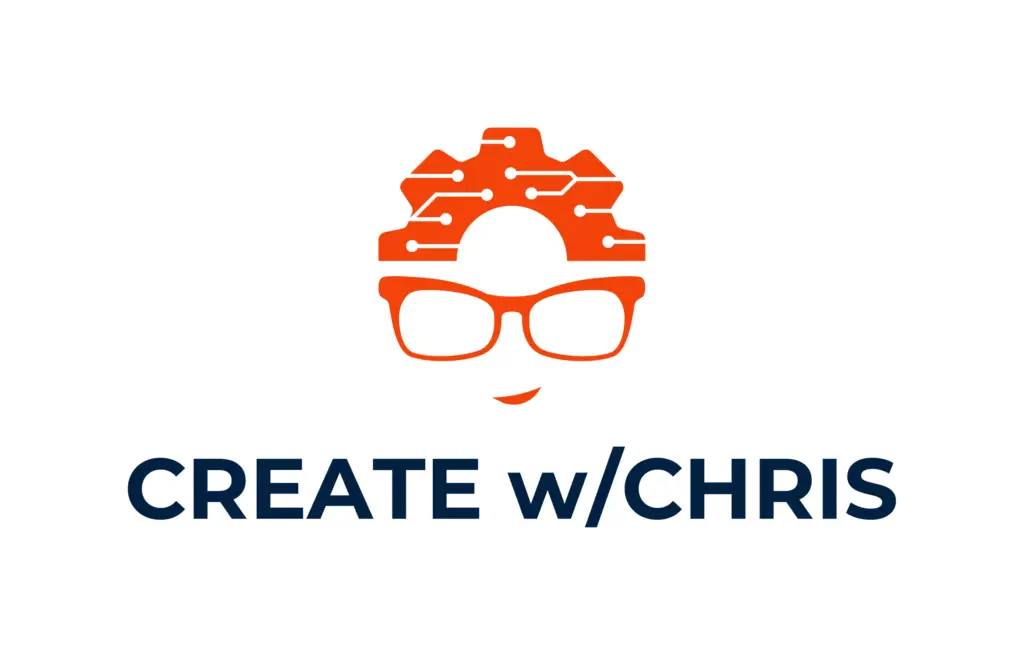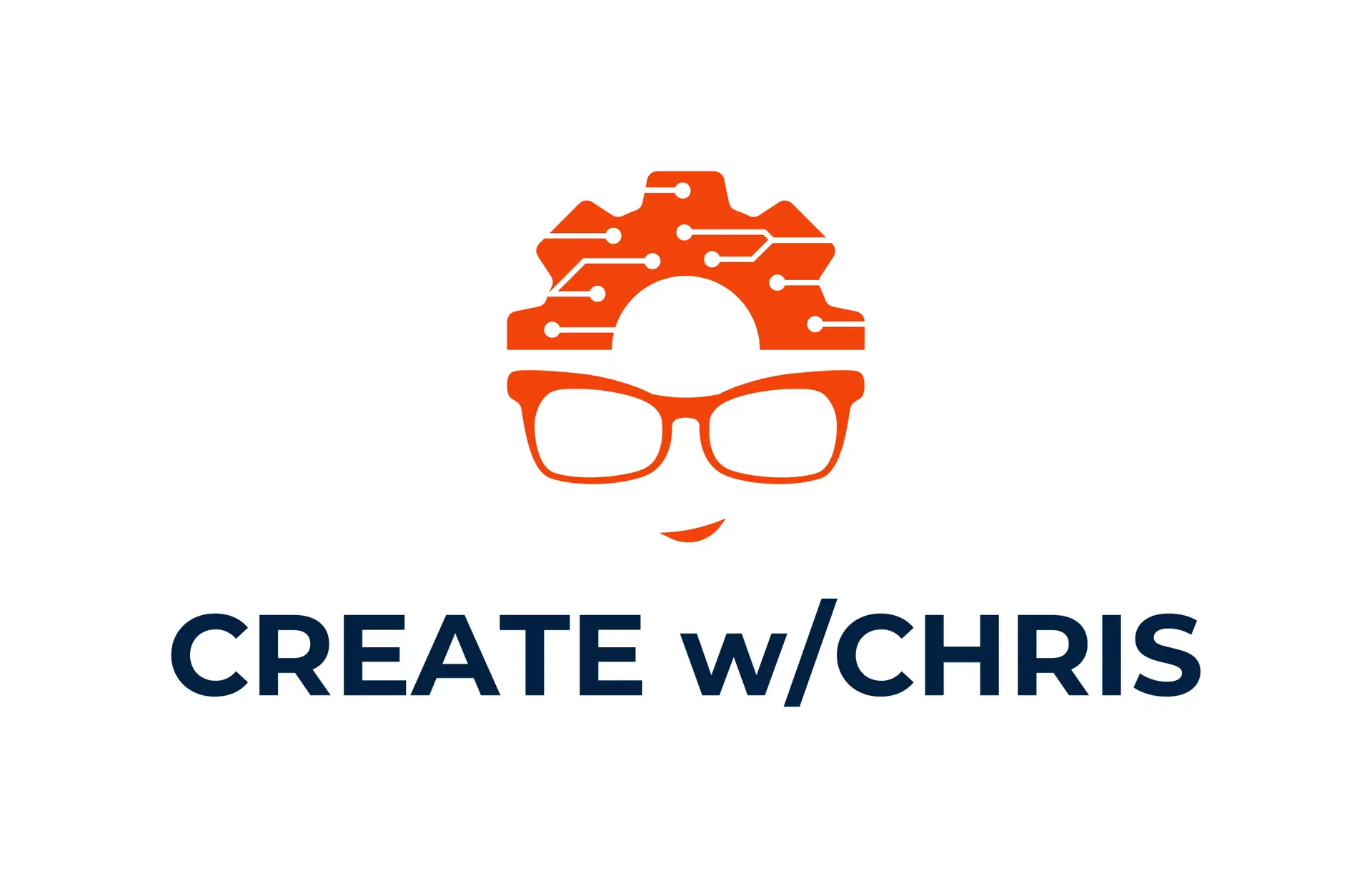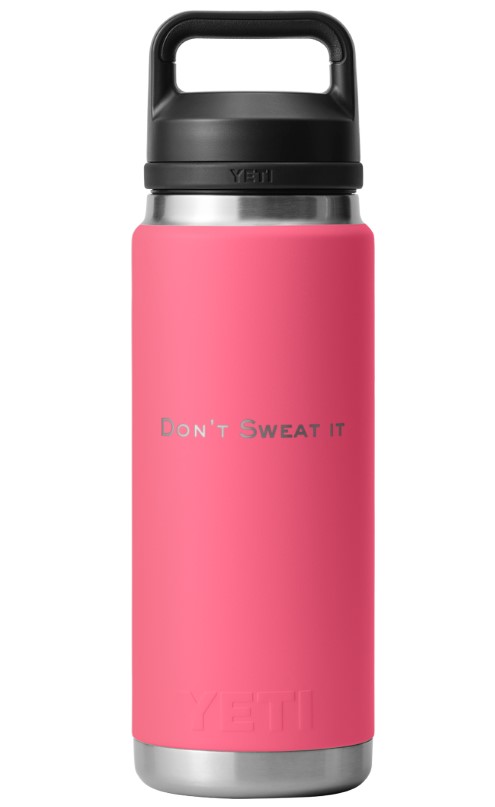No two products are exactly the same. Customers need a reason to buy one product over another, even if the product is a replica of another. Shinier, more durable, cheaper, more efficient, somehow all products must differentiate from one another no matter how big or small that differentiation may be. Product managers are responsible for developing differentiation and identifying the problem a product is solving, the customer, what motivates them, and how the new product can check all those boxes.
I’m motivated by delighting customers with products. Period. I thrive when solving different problems and bringing those solutions to market. As I position myself in an ever changing economic environment, it occurred to me that I need to treat myself as the product. Despite having similar job titles, we’re all different with our strengths and weaknesses and how we approach the challenges we tackle every day. This post will give you a peek under the hood of how I approach product development from scratch, using myself offering Product as a Service (PaaS) as the product. If you like what you read, I’d love to hear from you!
High Level Process
This post will follow the outline I use when developing any new product:
- Problem Statement
- Vision Statement
- Differentiation
- Product features and roadmap
- Go-to-market
- Business impact and measuring success
Problem Statement
All new products or features need to solve a customer problem or pain point. I can’t count how many times a work partner (engineer, marketer, salesperson, executive stakeholder, etc) brought a new idea to me without it solving a clear problem. “What customer problem does this solve?” is one of my favorite first questions when presented with a new idea. The clear and succinct definition of the customer problem is critical to product success and if that’s not established upfront, the end result will likely be fuzzy. The best ideas in the world need to solve a key problem for a customer even if they don’t know it’s a problem yet.
As I look at the state of product development across most industries, I see something specifically generic forming. That contradiction is intentional because I notice many organizations looking for individuals that have extremely specific experiences across many disciplines. Product development professionals need to check a number of specific boxes:
- Very specific experiences
- E.g. Must have experience in FI SaaS in artificial aquatic habitat development
- Strict adherence to certain frameworks
- E.g. Must work in agile scrum with direct experience with SAFe, Waterfall, and emerging methodologies
- Specific company experiences
- E.g. MAANG product managers
- Lead teams to execute roadmaps
- E.g. Force team adherence to PRDs and roadmap process
We product professionals become specifically generic over time as the check boxes (I consider these a “toolbox” rather than requirements) become our career development roadmap. It’s certainly wise to grow and expand experiences, but we’re all people with unique skillsets using similar toolboxes.
One driver for specifically generic product professionals is pressure on employee headcount to keep development costs in check. More is being required of fewer so hires need to be strategic to ensure maximum success. Pressure on headcount can open opportunities for alternate work models, and is a part of the problem to solve.
Embracing individuality with alternate work models like fractional should be embraced and encouraged by organizations large and small. As a product development professional, the problem I’m going to solve is:
Organizations are creating and building products and teams in a vacuum with increasingly tight resources, missing external perspectives and experience while straining resources that reduce product differentiation.
Vision Statement
Once a customer problem is identified, a vision statement is critical to aligning your team or yourself around where the product is headed. Vision statements should be vague enough to allow for iteration and development, but specific enough to last a while to help guide the product with where it’s going. It’s important to not overthink the vision statement and gather feedback from stakeholders to make sure it’s clear to everyone involved. Small tweaks should be encouraged, but once it’s set…that’s it!
I know I want to solve key customer problems using my diverse background that can apply to just about any industry or medium within many different organization types. Broad, I know…but that’s the differentiator! The key in my problem statement is that organizations tend to be too focused which can lead to ho-hum products and tepid business results. I’m going to solve that and I’m uniquely positioned because of my broad background.
My Vision Statement:
Create unique world-class products and teams with organizations big and small leveraging my diverse background in different mediums and industries in a Product as a Service (PaaS) model.
Differentiation
I’ve used this word frequently in this post and that’s for good reason: differentiation is the entire reason someone will interact with and buy your product! In the case of myself, it’s the reason someone would bring me onto the team to develop new products. Product development professionals should be constantly considering differentiation in brand new or existing products. Even if the vision is to copy another product (I’d run from that challenge), there still has to be a reason for purchase. Is the copy better or more robust than the original? What does the copy do different and why does it exist? Oftentimes it’s “make it cheaper” and while that may drive short term business results, it’s unlikely to drive long term business success.
How do I differentiate myself as a product development professional?
I love solving different types of problems, so I’ve worked with many different types of organizations
- Fortune 50 companies
- General Motors
- Stellantis
- Fortune 500 companies
- S&P Global
- JD Power and Associates at McGraw Hill before name change
- Omnicom (designory)
- S&P Global
- Startups
- Forterra
- automotiveMastermind
- Acquired by IHS Markit, who merged with S&P Global during my tenure
- Digital Medial
- Autobytel.com, the first automotive website
With a diverse background in companies comes a diverse background in problems and solutions in different mediums
- Product development
- Hardware
- Software
- R&D innovation
- Product Marketing
- Brand management
- Advertising specialist
- Go-to-market planning
- Data Analysis
- Broad market analysis
- Sales Forecasting
- Leadership
- Directly developed and led product teams
- Indirectly mentor and lead friends and colleagues
I recognize that while my experience is more diverse than many, it’s not my only differentiator. Many product professionals have a broad background in developing different products so to truly differentiate myself, I need more. In my customer problem assessment, I identified headcount pressure and costs for organizations as a problem to solve. Taking a PaaS approach where I offer product development services on a one-time cost or subscription basis enables companies to tap into my broad skillset without adding to headcount or fixed development costs.
I’ve truly done “a little bit of everything”, making me a unique option for any size organization looking to level-up their product game without an increase in fixed development costs.
Product Features and Roadmap
This is where the fun REALLY begins and often where people start with developing a product. The problem with that approach is features and a roadmap that aren’t specifically aligned with solving a problem and fulfilling a vision will often lead to mismatch with product market fit and drive mediocre at best results. I get it, ideation and brainstorming is fun! It can be my favorite part too and It can be really simple to dream up new ideas and figure out when and how to develop them. Without strategic homework however, development will often drag on and end results can be confusing to the end user.
Me as a product:
I love to build. I love the challenge of working with teams to build new things that delight users with products and experiences that surprise with ingenuity, thoughtfulness, and attention to detail. The best products are built by passionate teams motivated by a strong vision and a clear roadmap to delivery and I love to lead that charge. Every company is unique and every challenge is different. I’m driven by identifying and tackling weaknesses while leveraging strengths to build world-class products teams making outstanding products.
I’m often asked where I went to engineering school. I have a business and marketing background where I focus on applying strategic analytical thinking to solving complex technical and business problems. I’m just as comfortable presenting to leadership in the boardroom as I am rolling up my sleeves and advising on technical challenges in a code stack or factory floor. I’ve built productized predictive models for marketing and sales forecasts, designed database structures, led agile transitions, created innovation teams in corporate basements, established new accessory product lines, and grown entire vehicle brands.
I’m proud to leverage my unique mindset to launch teams and companies into the product stratosphere, through the following services:
- Fractional product leadership
- Fractional (1-6 mos part time) CPO or head of product to establish a product mindset in new or growing companies
- Contract product development
- Establish development of a new product through a certain milestone or end-to-end
- Continue development of an existing product through establishing a roadmap or executing an existing roadmap
- Contract organizational development
- Design and establish a product organization from scratch including guidance with initial hiring and team building
- Review and identify opportunities for improvement in existing organizations
- One-on-One Coaching and Mentorship
- Work with founders or executives to level-up product thinking
- Coach and mentor product professionals for career guidance, input on problems, and networking
- Full-time employment
- Director and above or senior level individual contributor product leadership opportunities
- Strategy workshop Leader and Facilitator
- Onsite or virtual single or multi-day events for:
- Visioning
- Roadmapping
- Ideation and design thinking
- Onsite or virtual single or multi-day events for:
Roadmap
While I could execute any of my product features at this moment, I’m further along in development of some features than others. Taking on too much all at once is the folly of many development teams, myself as a product included. It’s important to keep focus on what is most critical to customers at a certain point in time. Developing and launching a feature before there’s much demand from the market isn’t necessarily wasted effort, but the opportunity cost of not developing what’s more important users can be detrimental to team morale and more importantly, business results.
Recognizing that as of writing this (Feb, 2025) my most recent job roles have developed my Fractional, Contract, Full-time, and One-on-One product features the most. I can hit the ground running with those and will prioritize them first.
Looking at the current economic conditions and resulting job market for product leadership, fractional, contract, and one-on-one opportunities offer the most business potential for my organization (me). Organizations are reducing headcount to keep cost in check and hiring a fractional or contract product leader for a set period of time is friendlier to the balance sheet while ensuring development targets and business goals stay on track.
My Minimum Viable Product (MVP):
Target Launch: 3/1/2025
- Fractional Product Leadership
- Contract Product Leadership
- One-on-one Coaching and Mentorship
Post-MVP enhancements:
Strategy Workshops
I’ve led strategy workshops at Stellantis, automotiveMastermind, and Forterra with product, marketing, engineering, and leadership teams (sometimes all at once!). These workshops are often the most fun I have in my job, but I recognize that doing something as part of my job is much different than doing something as my job. One-off workshops need to be well organized, orchestrated, and above all else productive. Workshop structure, materials, and facilitation need to be worked out well in advance and something I identify that I’m not yet prepared to offer customers. This is my key post-MVP enhancement for my roadmap that I break down into the following initiatives and epics using a “product vision workshop” feature as an example:
| Initiative | Epic | Feature | Development Item |
| Product Vision Workshop | Structure | Agenda | Identify workshop agenda at the day level with goals |
| Agenda | Develop daily agenda with goals | ||
| Participants | Identify key suggested attendee types for the agenda | ||
| Participants | Establish key goals for each participant type | ||
| Materials | Presentation | Determine presentation medium | |
| Presentation | Outline presentation content | ||
| Presentation | Develop presentation content | ||
| Presentation | Test and refine presentation with focus groups | ||
| Physical materials | Determine what physical materials are needed for the room | ||
| Physical materials | Develop take-away materials for participants | ||
| Facilitation | Staffing | Establish how many facilitators are needed to effectively lead workshop | |
| Staffing | Identify who will fill the facilitator roles | ||
| Location | Identify workshop location options | ||
| Location | Gather requirements for workshop per location option |
Long term roadmap:
This is often where the real fun lives, but it’s not where you should spend all of your time. What may initially seem a bit out there and crazy may not as the market evolves and you refine ideas. The key to long term product growth is a continuously refined long term roadmap including wacky ideas to be nearly ready to execute. Staying in tune with customers and the market to give you continuous feedback for refinement ensures that your long term roadmap is setting your product up for success.
My Long Term Roadmap:
- Platform to collect other complementary fractional or contract professionals in one place, expanding my capability from me to we
- Productize my approach to fractional or contract work for others to utilize
Go-to-market planning
Many product professionals transition this work to a counterpart in product marketing. As a team of one, I don’t have that luxury and recognize that the most profound problem statement, earth-shattering vision, and highly executable roadmap won’t achieve much if customers aren’t aware of and excited about your product offering.
Go-to-market is where the fundamentals of marketing (product, price, promotion, place for you MBAs) come to life to make your product or service successful. It’s at this stage where if you haven’t already done so, establish your brand and how it’s represented, the mediums you’ll use to communicate it, identify how you’ll increase awareness, and a long term strategy for utilizing all of those for continued success from launch and beyond.
My Product
In order to sell myself as a product and my vision, I knew I needed a digital presence beyond what social media like LinkedIn could offer. I’m offering tech expertise, so a robust digital presence that showcases my unique experience, capabilities, thoughts, and serves as a conduit for lead generation would be my first “product”. I enjoy writing and sharing my experience and perspective with the world, so a platform for documenting and clearly communicating ME would help drive confidence in my product while providing continued marketing content.
Before kicking off development I needed to figure out how, but even before that I needed a brand.
My Brand
I initially considered branding myself as a product development agency with names such as “Product Partners” or “Differential Building Partners”. Initial research into the product development agency market identified a number of established competitors who were regional, national, or global and all with more capability and experience that I myself could offer.
Back to the drawing board
One night it hit me. There’s many agencies. There’s many other product developers like me. But there’s nobody who is me but ME. My unique talents, skillsets, and experiences are what sets me apart. My passion for creating things is rivaled by few…and I wanted to extend my uniqueness to the world. I am the product, I needed to make myself the product! That set this entire thing in motion.
Naming is a tricky thing. Get it wrong and your brand is sunk before it has the chance to float. It needs to be simple and catchy yet explanatory with being scalable for future product growth. I’m by no means a creative brand expert, so I utilized ChatGPT to brainstorm brand names for myself, cross referencing available domain names for my digital presence. Then within 4 prompts, there it was: createwithchris.com
Something about it struck me and I knew I found it. The simplicity, the alliteration (which you’ll notice throughout the navigation on the website), it’s catchy. Better yet, it could be scalable. My long term roadmap idea of productizing my approach was top of mind. CreatewithCarl, CreatewithCarrie, it could even work for CreatewithMichele. The “Createwith…” prefix is something that I could really grow into and with my name, I set forth to establish a BRAND.

A great logo wields immense power. With a good logo a viewer can identify the brand at a simple glance without any words. I needed something simple and representative to go along with my name. I’m not a creative branding expert and I’m not a creative designer. I utilized ChatGPT to draft a few logos but most were very “AI” and nothing quite hit me and who I am.
After some searching, I discovered fiverr.com and its AI tool that can create branding elements utilizing the work of real graphic designers. After a few prompts similar to my ChatGPT prompts…there it was…a perfect digital representation of myself and what I offer. I didn’t even prompt that I wear glasses, it’s like it read me. Upon seeing the logo, the entire “createwithchris” looked long and hard to read at a glance. To improve readability while adding a dash of tech code with a lens toward scalability, abbreviating “with” to “/w” made the difference. The fiverr output even let me choose color combinations, of which orange and dark blue are my personal favorites (link to blog post about my Orange Colorado ZR2 Bison coming soon). For under $60, I had my custom branding elements and the rights to use them.
CreatewithChris.com Website
In the early days of the internet, I loved to dabble with building websites. It was the first medium where I could create something from nothing using just my mind and that intrigued me to no end. I started with borrowing code from simple websites I liked and editing from there with basic HTML. When wordpress launched, it opened up the world of more advanced creation…just as my professional career started to take off and my focus shifted. It had been 15 years since I had touched much web code, but I was ready to dive back in with my trusty AI sidekick by my side.
As the internet has evolved from editing simple HTML with comic sans font and cat GIFs, the potential with websites and webapps has proven to be truly limitless. Limitless potential applied to my website as my product brain went crazy with ideas to implement. I knew from the get-go that I needed a minimum viable product (MVP) defined for my website to keep scope creep in check and keep my 3/1 launch date on track. I needed a site that was engaging and worked well with enough content to keep visitors engaged while learning about and building trust in my offerings.
Website MVP
- Front end requirements
- Smooth, efficient, and easy to use
- Robust and elegant media presentation
- Blog capability to organize editorial content
- Logical scalability to enable my site to grow
- Back end requirements
- Simple editor for creating and managing pages
- Efficient and robust media (images) management
- Analytics to track user behavior and content performance
- Content and high level site map
- Homepage scrolling to summarize my experience “creations” and competencies
- One example with detailed content for each of my creation types (hardware and software)
- Competencies overview
- Offerings overview
- SEO optimized for key search terms for my product around “product development”
Website Development
I wanted to pick up where I left off with web development 10+ years ago and take on the challenge of developing the website myself. I’m a builder after all, and since I had just professionally branded myself using AI, I knew there had to be simple website builders out there that I could utilize maybe with AI’s assistance. After some research and quick analysis of options, I was surprised to see wordpress as still a dominant force in the website development game! With the backend chosen, I set out evaluating different editors and hosting options and settled on Elementor for its simple yet robust development interface and cheap hosting with free domain registration for the first year.
Fiverr established all my key branding elements from the logo in various sizes and formats including RGB color schemes. I utilized those to build the website in Elementor after I found a profile template that worked well enough. I trashed most of the template in the end, but it gave me good ideas for containers and how to structure elements of the website. I established a simple sitemap as part of my MVP to guide my development, then focused on the UX to ensure that not only was my website smooth and pleasing to look at, but also led the visitor to engage and ultimately contact me for my expertise.
Website UX design
User experience (UX) is a critical element established between product design and product. A great UI needs to start and end with the target customer and a deep understanding of that customer with product. The UX will make or break a product, especially a digital one such as a website.
My target customers are founders, executives, product leaders, and recruiters, a group I am a part of! These are very busy people likely searching for quick information on me and why they should work with me. Most portfolio website templates are structured across multiple pages, requiring interacting with navigation and multiple clicks across the site to read all information. Past experience combined with my personal preferences for web navigation show that engagement drops drastically with each additional click required.
My goal was to make my site scrollable and scalable with all key content I wanted the visitor to find right on the homepage, with links to blog posts (like this one) allowing the user to deep dive into anything of particular interest. I reconfigured the navigation to use anchor links to key sections of the home page, ensuring a consistent experience if scrolling or using the navigation. The navigation also reinforces the key elements of my product that I want the customer to continue engaging with and remember.
The ultimate goal of the website is to drive visitors to contact me for further discussion, so a clear call to action “Let’s Create!” button is embedded in the top nav to follow the user through all activity on the website should anything spike their interest enough to reach out. The button is an anchor link to my contact container in the footer, preventing additional clicks for navigation and new page loading. The contact container in the footer includes my MVP capabilities along with my contact information and a contact form that saves the user a click to contact me directly rather than copying my email address to their email.
Marketing
The best product in the world won’t be successful if customers don’t know it exists. That’s particularly true of me and my offerings. With a smooth functioning, well designed, and built out (to MVP requirements) website, I need a similar marketing strategy to build awareness and enthusiasm for my product. Selling myself as a product in 2025 means leveraging social media, but recognizing the correct forms of social media to utilize is important. LinkedIn is an obvious choice for professional networking and most of my target market will be on that platform for networking or searching for providers of my services. I believe strongly in remaining politically agnostic professionally, which means avoiding polarizing platforms that are more appropriate for personal viewpoints and discussions. I’m taking on this endeavor entirely on my own, so focusing efforts strategically will keep things manageable and a focus on LinkedIn social media is the most appropriate.
I have a robust network on LinkedIn and will start with a grassroots campaign among my network. I developed an editorial calendar for blog content on my website and will use that with LinkedIn posts to drive awareness. My editorial calendar includes my “MVP” posts for content on the website along with a weekly promotional cadence with posts on LinkedIn. By utilizing content that already exists, I can focus efforts on marketing and promotion in the first weeks to make sure awareness gets off the ground and I can gauge the performance of content based on LinkedIn post interactions, website traffic, and leads generated. After the first MVP content month, I will manage my editorial calendar in an agile fashion allowing for adjustments to maximize engagement.
With a foundation established on LinkedIn, I’ll engage directly with regional tech and product groups, startup incubators, and on-on-one opportunities identified through LinkedIn. In-person outreach opportunities will help build my product outside of the digital sphere and position me as a real life creator. I’ll also begin directly reaching out to my executive network to increase awareness with customers that might be too busy to recognize my product through passive marketing.
Depending on performance at this time, I may consider paid content on LinkedIn or Google. As of writing this, the ROI seems fuzzy and would require further analysis before making an investment (blog post potential!). I will remain hesitant to expanding social media platforms due to the volatility of polarizing personal viewpoints, but further outreach with podcasts, trade shows, and panel discussions will become logical next steps.
Taking an agile approach to marketing my product is critical for ensuring continued success. I expect to evolve my strategy overtime to ensure it’s driving the right business outcomes. Being so committed to a plan that you won’t allow it to change despite poor business results is the folly of many and I won’t let that happen.
Business Impact
Everything so far leads to this. While I’m motivated to create great products and services that people love to interact with, those mean nothing if they don’t drive business results. Business results aka making money is the fundamental motivator to creating a product. I have bills to pay, aspirations to achieve, and goals that capitalism (love it or hate it) enables. Being critically mindful of business impact and establishing business goals up front can help provide the focus necessary for driving a successful product. A product needs to surprise and delight, but driving the bottom line IS the bottom line.
When launching a new product, it’s important to be ambitious yet realistic when establishing business goals. These goals should be actionable and help drive adjustments to the product and go-to-market plan. As a product evolves through its lifecycle, so should the goals it’s measured by. A brand new product will weigh goals around growth and awareness rather than sustainability and profitability, while the inverse is true as a product ages. For this post, we’ll focus on my go-to-market business goals and I’ll write future posts for goals as my product evolves through its lifecycle (post series alert!).
Go-to-market Business Goals
As of Feb, 2025
Launch: On or before 3/1/2025
- Launch post on LinkedIn
Weekly Goals:
- Connect (phone, Zoom, Google Meet, etc) with at least 1 person per day
- 1 post on LinkedIn
- At least 5 new meaningful (potential customer, stakeholder, etc) connection on LinkedIn
- Website traffic at least 50 visitors, with post views within 10% of traffic count
1st Month Goals:
- At least 2 leads for fractional or contract work
- Grow LinkedIn network by at least 25 meaningful contacts
- LinkedIn Posts generating at least 50 engagements (<10% of network, engagement = comment or reaction)



